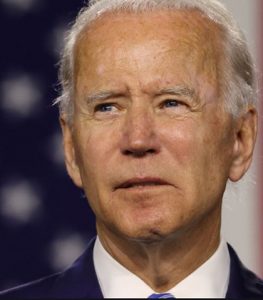Biden’s stumble on refugee policy could have global consequences
President Biden’s promises to restore the US’ refugee and migration programs have suffered a chaotic few weeks.
After promising to revert to a refugee intake of around 125,000, similar to the Obama years, the Biden administration backtracked and announced it would limit the number of refugees allowed into the US this year to the historically low level set by the Trump administration at around 15,000.
 After outrage from refugee advocates and left-wing Democrats, that decision has been put on hold with a final announcement to be made in mid-May.
After outrage from refugee advocates and left-wing Democrats, that decision has been put on hold with a final announcement to be made in mid-May.
President Biden also promised to reunite 545 children with their parents after they were separated by the Trump administration in 2017 and 2018.
He pledged to build a task force to reunite them. While the task force has formed and has pledged to bring back deported parents to reunite with their children, not one of the deported parents has so far been brought back, according to lawyers representing the families.
Despite a strong first 100 days in office, most notably securing the massive pandemic relief bill, migration has emerged as a major stumbling block for the Biden administration.
Under former presidents Obama and especially Trump, measures were enacted to compel asylum-seekers to return to their own countries or third countries such as Mexico, while their cases are reviewed.
With the onset of the COVID-19 pandemic, virtually no adult asylum seekers are being allowed to remain in the US pending adjudication.
Under US law, however, unaccompanied minors cannot be deported summarily. They must be protected and placed with relatives or foster families until their cases are resolved through usually lengthy legal processes. Under the Trump administration and now under Mr Biden, there were several surges of families and especially unaccompanied minors requesting asylum at the Mexican border.
But the wavering shows that the Biden administration is struggling to find a clear policy as it tries to reverse President Trump’s harsh immigration policies while also making itself a target for the left, who want unfettered access to the US for refugees, and the right, who want none.
Unauthorised migrants crossing the border are processed differently from refugees, who are fully vetted and approved for resettlement before arriving.
But President Biden was concerned that lifting the Trump-era cap on refugees would overwhelm the system that had been largely dismantled by his predecessor, observers say.
On February 12, that the administration announced it planned to allow up to 62,500 refugees to enter the United States in the fiscal year ending September 30 and 125,000 in the following year, citing “grave humanitarian concerns” around the world.
But for two months, the presidential determination that would have allowed refugees to board flights to America remained unsigned.
But Biden administration officials, trying to explain the delay in raising admissions, said the thousands of unaccompanied minors who have crossed the border in recent weeks played a role in the president’s decision to leave the cap in place because the surge forced officials to dedicate resources to finding shelter space throughout the US.
Increasing refugee resettlement is of crucial importance globally. Resettlement is part of a three-pillar international refugee support system including local integration and safe and voluntary repatriation that requires participation from all countries.
But the US and Europe have adopted increasingly draconian policies in recent years, resulting in a serious decline of refugee and asylum seeker rights worldwide.
Observers say that if the Biden administration fails to restore refugee resettlement, the global refugee assistance regime will continue to crumble.












